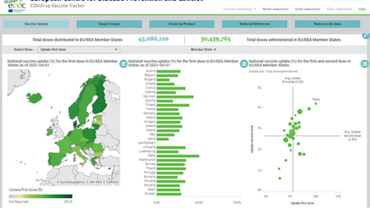Today ECDC released an updated Threat Assessment Brief on the SARS-CoV-2 variant B.1.1.529, known as Omicron.
First detected on 11 November in Botswana, the number of countries reporting cases of Omicron globally and in the EU/EEA continues to increase.
There are number of uncertainties around Omicron in terms of transmissibility, severity, and immune escape potential, though preliminary data suggests a substantial advantage over the Delta variant. Based on mathematical modelling conducted by ECDC, there are indications that Omicron could cause over half of all SARS-CoV-2 infections in the EU/EEA within the next few months. The greater Omicron's growth advantage over Delta and the greater its circulation in the EU/EEA, the shorter the expected time until Omicron causes most of all SARS-CoV-2 infections.
ECDC Director Andrea Ammon said:
We continue to monitor and assess the spread of Omicron, but there remain a large number of factors that can change the dynamics of the situation, and the evidence we have so far is limited. With that in mind, a multi-layered approach to delay any further spread of Omicron in the EU/EEA is needed. Vaccinations for those either not yet vaccinated, or who have not completed their vaccine course and boosters for those over 40 years of age are imperative. Non-pharmaceutical interventions have been shown to be effective in reducing transmission and should continue to be implemented based on the epidemiological situation, including physical distancing measures and adequate ventilation in enclosed spaces and working from home if at all ill.
Enhanced contact tracing measures such as backward contact tracing and stricter management of contacts could help slow the establishment of the Omicron variant in the EU/EEA.
Temporary travel-related measures should be carefully considered in light of the latest epidemiological situation and should be regularly reviewed as new evidence emerges. Such measures might include the testing and quarantining of travellers who have recently returned from affected countries and sequencing cases identified among travellers. Public information around the emerging situation and the public health measures in place are important to raise awareness and support their effective implementation.






